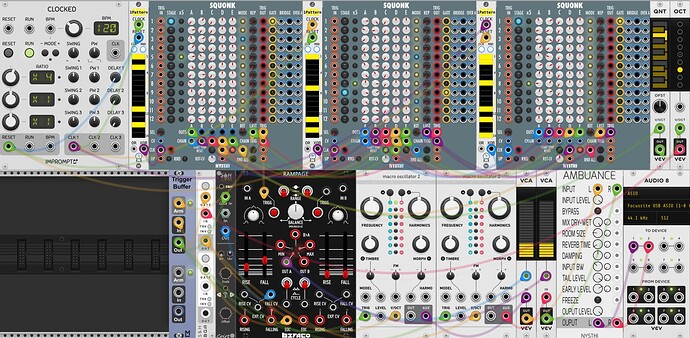Here’s my problem: I often want what I call an ‘edgeless’ sound - meaning that it has a slow attack and a slow decay.
This doesn’t interact with how sequencers work so well because of this scenario.
Sequencer trigger output starts an envelope, which modulates the level of a VCA.
Envelope output voltage increases proportional to the attack time of the envelope.
If the envelope reaches the peak voltage, it starts the sustain phase, and then decays based on the release time.
BUT If another trigger occurs during the Attack phase, the level goes to zero and the attack ramp starts again.
The net result is that you get your smooth attack but the overall level is low.
This is, of course, Just How Envelopes Work. But it drives me nuts because I can jack up the signal volume, but if I ever decrease the attack time to the point where it reaches full volume before the next trigger, the signal gets LOUD. In other words the volume of the signal is attack-time dependedent.
Attack Time Dependent Volume is difficult to compensate for. You can kinda-sorta use a compressor to keep it from getting too loud, but compressors introduce their own artifacts.
Honestly I think I’ve answered my own question here as “You can’t get there from here” but I’d be interested if other people have run into this issue, and if they have a solution that makes them happy.
Oh and here’s an oddball patch where I make a failed attempt to address this by using a trigger buffer to delay triggers until EOC. It does allow notes to achieve full volume, but it’s it’s own kind of interestingly wonky effect.
SlowEnvelopeExample.vcv (5.0 KB)

